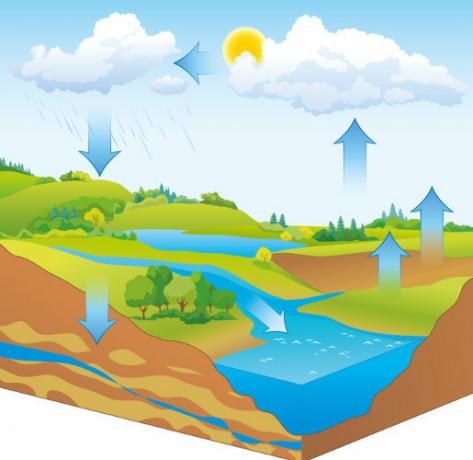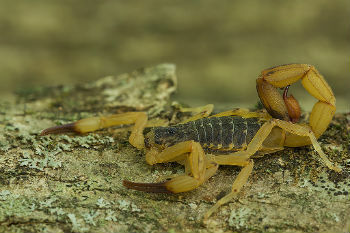Sometimes, when looking at a plant in the morning, we get the impression that it is covered with dew. However, what may be happening is a process called guttation, which is characterized by the loss of water in the liquid state through the sheets.
The water released by the leaf is transported via xylem and is forced to go outside by the positive root pressure. This pressure is caused by the difference in water potential existing between the xylem and the tissues that surround it.
Initially, water and diluted ions enter the root because of the potential difference between the soil and the raw xylem sap. At times when water loss through transpiration is small, the accumulation of solutes in the xylem makes its water potential more negative when compared to other tissues and triggers the penetration of water into its interior by the process of osmosis.
With the emergence of positive root pressure, water and ions are forced through the xylem towards the shoot. In the leaf, positive root pressure forces water out of the leaves through openings called the
hydathodes, which are usually located at the apex of the leaf or on its margins.Hydathodes have exclusively xylemmatic conduction elements, an open beam sheath, a set of parenchymal cells called epithema and aquiferous pores, through which the water is deleted. The aquifer pores, when observed under the microscope, can be confused with "simple" stomata, further analysis being necessary to verify the anatomy of this region.
Do not stop now... There's more after the advertising ;)
Guttation only happens under some special conditions, such as high relative humidity, good irrigation and low transpiration rates. On hot days, when transpiration is high, the water acquired by the plant is lost very quickly, thus avoiding the positive pressure process. The process is also less efficient during the day, as water transit is faster and pressure is low.
It is worth noting that some plants do not have this process, such as pine trees. Smaller plants are generally the ones with this characteristic.
The guttation process is extremely important for plants, as it prevents the pressure inside the xylem from causing water to escape and occupy the intercellular space in the tissues. It is also important to emphasize that the elimination of water allows the flow of solutes through the plant.
ATTENTION:Don't confuse guttation with dew! In the latter case, water condenses on the surface of the leaf; in guttation, the water is being eliminated by the plant.
By Ma. Vanessa dos Santos
Would you like to reference this text in a school or academic work? Look:
SANTOS, Vanessa Sardinha dos. "Guttation"; Brazil School. Available in: https://brasilescola.uol.com.br/biologia/gutacao.htm. Accessed on June 27, 2021.
Biology

Learn a little more about the water cycle, an essential cycle for the survival of living beings. In this text, we will talk a little about what a biogeochemical cycle is, the stages and the importance of the water cycle and we will present a short summary of this process.

